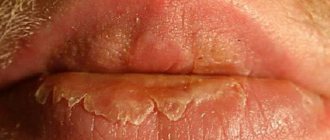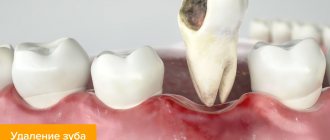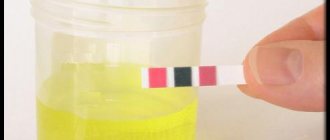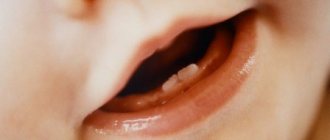The term “diathesis” in domestic medicine refers to a feature of the body’s constitution, which is expressed in a predisposition to certain diseases. Usually, diathesis refers to allergic diathesis, the most common and easily diagnosed. According to various sources, diathesis occurs in 30-75% of children.
Unlike allergies themselves, diathesis is not associated with functional disorders of the immune system. An allergic reaction during diathesis in infants is usually explained by the characteristics of the child’s body. In children of the first year of life, the protective function of the intestine is reduced: the intestinal walls are thin, the amount of enzymes and antibodies produced is small. As a result, the child’s body may not be able to cope with a large number of highly allergenic foods and give an allergic reaction. By two to three years, the amount of enzymes becomes sufficient, and diathesis in most cases goes away.
Dry lips
Probably every person has an unpleasant feeling when their lips dry out
.
It feels like thick layers of dry skin are forming on your lips that will never go away. Every woman, more than once, has wondered why her lips dry out and crack, causing considerable discomfort. Not only is this simply unpleasant, but such a problem can lead to infection and various inflammations of the epidermis of the lips. In order to take some measures and begin to treat chapped and dry lips
, it is necessary to determine the causes of this problem.
Caring for a child with dry, sensitive skin - tips for parents
At the moment of birth, the child finds himself in new conditions; he moves from the dark, warm and constantly moist uterine cavity into the air space.
The largest organ of the body, the skin, which protects the baby from all external negative influences, is gradually being rebuilt to a new level of work. In the first months of life, the skin is not ideal: it turns red, peels, becomes dry, or becomes covered with small pimples.
These are completely acceptable reactions after a long stay in a humid environment, surrounded by amniotic fluid. The functioning of the skin in the air, where temperature, humidity and the speed of air flow constantly fluctuates, requires a certain “tuning”. This takes on average about a month.
Therefore, it is important to properly care for your baby from the first days, maintaining the health of his skin, and to know what products are needed, how to avoid problems, what is needed for hygiene, how to help with minor injuries, rashes, and itching?
Sensitive skin is a major problem
A baby's skin is thin, delicate and more sensitive than that of an adult. This is due to the structural features of the children's epidermis: the cells do not adhere so tightly to each other, lose moisture faster and peel off at the slightest negative impact.
The sweat and sebaceous glands are just adjusting their work, so they either work too sluggishly, then the skin dries and cracks, or they produce an excess of secretions - then pimples, clogged pores and sweating occur.
Considering that approximately 20% of children have an initial hereditary predisposition to allergies, including skin allergies, proper care of the baby from the first days after birth becomes one of the main tasks.
Risk areas are the skin in the diaper area, in contact with urine and stool, the face, and natural folds of the skin.
The most common problems for children are diaper rash, prickly heat and dry, flaking skin, even cracking in particularly affected areas. This is not a very pleasant sight, especially if it is just a baby who himself will not complain of irritation and pain, itching and discomfort.
Dry skin of a child can be easily eliminated with the help of simple home measures; only in rare cases does the baby need the help of a doctor and the use of any medications.
Features of a newborn
To understand why dry and hypersensitive skin occurs in children, parents must understand the specific physiological changes in the epidermis of the newborn.
Babies are born covered with a whitish coating of vernix caseosa (vernix caseosa). The cream-like substance coats and protects the baby's skin from amniotic fluid until the baby is born. After childbirth, the lubricant is wiped off the skin, and the epidermis is exposed to air and bacteria, which gradually colonize its skin.
Deprived of lubrication, the top layer of skin dries out and peels off a few days after birth. Consequently, some dry skin is common in newborns.
Experts say newborns don't need extra moisturizer or lotions in their first month of life. They need to properly adjust the functioning of the glands and the activity of the upper layers of the epidermis to work in new conditions.
Excessive use of creams, cosmetics and various moisturizers during this period can only do harm!
As a child gets older, dry skin develops in response to certain external and internal irritants. In this situation, parental attention and immediate elimination of irritants are important.
Dry skin in children: what factors are to blame?
Dry skin (medical term: xeroderma) is mainly caused by increased loss of moisture, which leads to cracking and peeling of the epidermis, the outermost layer of the skin.
Factors that affect the functioning of the epidermis and its condition:
Weather . Extreme cold and extreme heat significantly affect humidity, causing the skin to lose moisture and dry out at a high rate.
Temperature and humidity in the nursery. If the temperature at home is very high or too low, the air in the rooms will gradually lose moisture and dry out the child’s skin.
By the way, heaters and air conditioners dry out the air a lot, so humidifiers for an apartment are a very useful thing, especially if you have kids.
Long baths. Bathing a child for too long washes away the natural protective hydrolipidic film on the skin secreted by the sebaceous glands. Taking a bath in potassium permanganate-treated or chlorinated water or herbal decoction damages and dries out the skin.
Hard soap. Regular, non-baby soap is too “harsh” for a child’s skin, which causes it to become dry. “Adult” cosmetics and bathing products have a similar effect.
These were common conditions that a child might encounter in everyday life. But dryness and irritation can also be a sign of a serious problem with your baby's skin.
There are many reasons that explain dry skin in children. But it is important for parents to know what symptoms should cause alarm when the baby needs help.
Actually, parents quickly notice dry skin, and quite simple methods eliminate irritation. But there are a number of symptoms that require you to visit a pediatrician or dermatologist.
These include:
• bleeding from cracked skin; • severe itching, which makes the child whiny and irritable; • pus or yellow crusts on dry skin; • swelling of the epidermis, increased temperature; • dry skin, causing colic attacks.
How to care for your baby's skin?
Preventing and treating dry skin is quite simple and all you need to do is follow a few simple steps and procedures.
Limit your baby's bath time. Prolonged stay in the bath, especially in hot water, washes away the natural protective film from the skin, leaving the epidermis vulnerable to the external environment. Experts recommend limiting bath time to ten minutes in warm (not hot) water.
Use mild, delicate soap. Always use soap specifically made for children as it does not contain harsh or harmful chemicals. Choose bathing gels and liquid soaps with added moisturizers as they protect the skin. Avoid soaps containing dyes and fragrances, as they quickly dry out the skin and cause allergies.
Follow the washing regime. Even if it is a gentle soap, it does not have to be used daily. It is enough to wash the child’s body and head with shampoo and soap 2-3 times a week or when the baby is very dirty. The rest of the time, washing with warm water is enough.
Use moisturizing lotions after bathing your baby . From about one month of age, moisturize your baby's entire body immediately after a bath using a hypoallergenic body lotion. The fats in moisturizing lotion form a thin layer on the skin that replenishes and prevents further moisture loss. Using moisturizers is the safest home remedy for baby's sensitive skin.
Choose clothes made from natural fabrics and without tight seams. Natural fabrics such as cotton are soft, non-allergenic and allow the skin to breathe easily. If your child has dry skin, it is important to switch to cotton clothes.
Use baby detergent. Children's clothes and bedding should be washed only with special baby powder without caustic chemicals or allergens. Look for a detergent designed for children with sensitive skin.
Use a humidifier. Dry air is the worst enemy of a child's skin. Use a portable cool mist humidifier that maintains a constant level of air humidity and prevents moisture loss from the skin.
Dress your child according to the weather. It is important that during walks the child does not freeze, but does not overheat. Very hot or very cold air lacks moisture, which can increase skin dryness and irritation.
Don't forget to give your child water more often . In hot weather or when the air is very dry, the body loses more moisture. Therefore, it is important to monitor the baby’s drinking regime. Infants need to be put to the breast more often; artificial babies and children receiving complementary foods should be offered a bottle of water more often.
Simple prevention and treatment steps can help relieve dry skin quickly. Parents should constantly ensure that their child has silky smooth skin.
Alena Paretskaya
Photo depositphotos.com
The opinion of the author may not coincide with the opinion of the editors
Causes of dry lips
Lips can become dry for various reasons. There are quite a few reasons, the main thing is to find the cause and eliminate it, as well as treat the lips.
- Frost, sun, wind and dry indoor air are some of the causes of dry lips.
- It happens that lipstick is not suitable for lips; lipstick can dry out your lips. I had this lipstick, it was long lasting, but it was very drying on my lips.
- Often dry lips and cracks can be caused by diseases of the gastrointestinal tract, that is, gastritis, pancreatitis and other diseases.
- The cause may be a food allergy. Eating very sour, spicy, salty foods.
- One of the reasons that is also worth paying attention to is reduced immunity and a lack of vitamins in the body.
- The cause of dry and cracked lips may be the habit of licking your lips. You should especially not lick your lips in hot, windy or frosty weather.
- Drink more water, dehydration leads to dry lips.
- Try not to touch your lips with your hands.
What to do if you have dry lips
Your lips don't become dry right away, it happens slowly. When the body begins to lose moisture, it tries in every possible way to signal us about it. The main thing is to pay attention to this need as early as possible, then the problem can be solved before it makes itself felt.
- First, let's determine and try to eliminate the cause itself. Do not use any lipstick in the near future, also give up your toothpaste for 3-4 days, or completely replace it with one that does not contain fluoride.
- Start using various lip moisturizers; they must be natural, or at least on a natural basis. Natural moisturizers include: Vaseline, cocoa butter, honey.
- Organize your daily meals. What and how you eat depends on the general condition of the human body. Most health problems can be avoided by establishing proper nutrition, eliminating all junk food from your diet and adding more fresh fruits and vegetables. According to dermatologists, poor nutrition is the cause of frequently dry lips.
- Although this is quite difficult, try not to lick your lips, this is very important in the fight against this problem. Otherwise, it can only make your situation worse.
How to deal with dry lips
Dry lips cause a lot of trouble. Of course, it is better to come to your senses in time and take emergency measures, but if it so happens that even a slight smile turns into painful sensations, then you need to start with pharmaceutical drugs and continue treatment with folk remedies.
Any crack on the lips opens the door to infection. To prevent this, apply antibiotic ointment to your lips; you can buy it at any pharmacy. But not all ointments act the same, and it is better to choose two products - one for treating cracks, the second as an antibacterial drug. One can be used in the morning, the other in the evening.
After the main problem is solved, take care that your lips do not dry out. Use sunscreen - the sun causes your skin to peel and dry out your lips. If you prefer a balm rather than a cream, then you need to apply it every time after you eat or drink something. In addition to protective cosmetics, do not forget about oily lipstick. It in itself is already considered protection for the delicate skin of the lips.
Look after yourself. No amount of cosmetics will help if you don’t get rid of the habit of licking or biting your lips. Saliva that falls on the skin of the lips moisturizes them only for a moment; it quickly evaporates and makes the skin even drier. And don’t forget the basics - take vitamins and drink plenty of fluids. Perhaps dry lips are associated with the general condition of the body, and if after all the measures taken the skin condition has not improved, consult a doctor
Cutaneous candidiasis: causes of appearance
Patients often ask the question: why doctors often send them either for tests or for consultations with “related” specialists. It would seem simpler: if there is a rash on the skin, treat the skin, but, unfortunately, not everything is so simple...
There are diseases and skin conditions that, in addition to burdening the patient with their own symptoms, are also markers, signs of some more serious pathology of the internal organs. One of these pathologies is skin candidiasis.
Case from practice
A young, slightly over 30, plump lady, who had previously complained of dry skin on her hands, began to feel itching between the fingers of her hand. Then the itching was joined by redness, and the skin began to peel off. Since she often had to do laundry and wash dishes by hand, both she and the doctors who treated her interpreted the incident as an “allergy to washing powder.”
However, the prescribed treatment (topical corticosteroids and antihistamines) brought only temporary relief, the symptoms never completely went away, and cessation of treatment caused a severe exacerbation of the dermatosis. Repeated changes of washing powder and detergents did not help either.
And here is the dermatologist's office. After examining the sufferer, I recommended interrupting treatment for a while and getting tested for fungi. Having received the results and additionally interviewed the patient, I referred her for a consultation with an endocrinologist, where, after an additional examination, diabetes mellitus was diagnosed for the first time.
The prescribed antifungal treatment brought a quick effect, and diet correction compensated for the initial manifestations of diabetes. I also recommended a more gentle regimen for the skin of the hands, softening creams... 2 years have passed since then. The dermatosis no longer recurred, and the lady, who went to the dermatologist, was able to prevent further development of the severe endocrinological disease in time.
Where does cutaneous candidiasis come from?
Fungi of the genus Candida are found almost everywhere: in the environment, on the skin, in the intestines of healthy people, birds, animals... However, most of us do not have skin candidiasis; only those who are very “lucky” get sick.
Most often, lesions of the skin and its appendages are caused by Candida albicans, which under normal conditions can be part of the normal microflora of the skin and intestines of humans and animals. Significantly less common pathogens are other candida (C. stellatoidea, C. tropicalis, C. parapsilosis, C. guillermondi, C. kursei, C. pseudotropicalis, etc., more than 160 species), however, recently they have become more common.
Factors influencing the possibility of developing cutaneous candidiasis
, can be divided into two main groups - internal and external.
Internal:
- metabolic disorders, especially diabetes, obesity;
- severe, debilitating diseases, often cancer;
- conditions after surgical interventions;
- chronic infectious diseases (tuberculosis);
- conditions associated with increased sweating (from prolonged elevated temperature to neuroses);
- circulatory disorders of the extremities;
- primary and secondary immunodeficiency conditions, including viral etiology;
- long-term treatment with corticosteroids (systemically), cytostatics, antibiotics (more often with self-prescription of the latter);
- alcoholism, drug addiction;
- chronic intoxication.
External:
- direct and prolonged exposure to harmful substances (detergents, acids, alkalis, cement, etc.) on the skin and mucous membranes;
- increased temperature and humidity in the room;
- clothing that is too warm, tight, occlusive (not breathable);
- erosions, burns, skin damage during manicure;
- lack of sufficient hygiene;
- bad habits (for example, lip biting in children, nail biting);
- ionizing radiation, etc.
Most often, these factors are combined, as in the above example, when an aggressive environment (solutions of washing powder and dishwashing detergents), which previously only caused dry skin, with the development of internal pathology served as an impetus for the development of a fungal infection.
I will tell you in one of the following materials how the symptoms of skin candidiasis manifest themselves, how contagious this disease is and what to do if you are diagnosed with it.
Good health!
Leonid Shchebotansky
Photo istockphoto.com
Products by topic: (glucometer), (glucometer test strips), (fluconazole), [product strict=”PIMAFUTSIN 2%”](pimafucin cream), [product strict=”nystatin”](nystatin ointment), [product strict ="clotrimazole"](clotrimazole)
What to eat if you have dry lips
and E causes lips to become dry and cracked. But! Excess vitamin A can also cause not only increased dryness of the lips, but also their peeling and cracking. Rich in vitamin A:
- carrot,
- yellow pepper,
- orange fruits,
- sea buckthorn.
It is also found in animal products:
- fish fat,
- butter,
- cream,
- cottage cheese,
- cheese,
- egg yolk,
- liver.
b-carotene (provitamin A) has the greatest activity. It is believed that 1 mg of b-carotene is equivalent in effectiveness to 0.17 mg of vitamin A (retinol). rich in b-carotene:
- apricots,
- rose hip,
- black currant,
- pumpkin,
- spinach,
- cabbage,
- celery tops,
- parsley,
- dill,
- watercress,
- carrot,
- sorrel,
- green onions.
The amount of vitamins varies according to the color of the products in a reddish-yellow color: the more intense this color, the more vitamin. Foods that contain vitamin E:
- wheat germ,
- soybean,
- peas,
- vegetable oils,
- eggs,
- spinach,
- leafy greens,
- apple seeds,
- almond,
- sea buckthorn.
Dry lips in a child
The problem of dry lips plagues not only adults, but also children. Delicate skin often cannot withstand environmental pressure, and then the mother suddenly notices that her baby’s angelically plump lips began to crack, peel and bleed. Dry lips in a child are primarily a signal that the baby’s body is losing moisture. The process is slow, so you need to immediately identify its causes and begin to eliminate them:
- dehydration,
- chapping,
- frosty and hot air,
- lack of vitamins,
- licking lips.
You can protect the skin of your child’s lips in different ways, but you need to start immediately so that more serious complications do not develop later. There are no sebaceous glands on the lips, so moisture evaporates from their surface faster. To replenish the natural supply of water in the body, you need to consume the proper amount of fluid. Teach your child to drink clean water, not juices, soda, or tea. Exactly water. The rest of the drink removes fluid from the body - this causes thirst and dehydration. You can put a humidifier in the children's room, this is especially important in the summer, or just a container filled with water.
Cold air or heat also promotes the evaporation of moisture. And the wind, which dries out the delicate baby skin, from which it is necessary to protect not only the baby’s lips, but also the face and hands. Buy balm or chapstick for children. They sometimes also differ according to the seasons. Lubricate your lips in the morning and before going to bed, and before going outside. Make it a habit for your child.
Vitamins responsible for healthy skin, bones, nails and hair are necessary for a growing body. These are A and E and are found in dairy products, eggs, green vegetables and tomatoes. And it is advisable to give the child multivitamin complexes for a period of 1-2 months in the winter-spring period. Explain to your child that licking lips is a bad habit. Show by example that this is not allowed, and your baby will follow you.
Methods of treating diathesis
When dealing with diathesis in a young child, the main thing is to choose the right diet, excluding foods that may cause an allergic reaction.
For a child in his first year of life, it is very important to receive breast milk. The proteins of human milk are easily broken down by the baby's enzymes and are completely devoid of allergic properties. However, a nursing mother must also follow a diet excluding fish, poultry, tomatoes, chocolate, smoked meats, spices and other allergenic foods.
When mixed feeding, the child should not be given some juices: orange, carrot, tomato. Introduce any new product carefully - from a small amount. It is important to prevent an allergic exacerbation, and at the same time, to give the baby’s body everything it needs for its development.
Specialist consultation
The Family Doctor pediatric allergist-immunologist will help you deal with your child’s skin problems, determine the cause of allergies, and also build a rational diet that is suitable specifically for your child.
Make an appointment Do not self-medicate. Contact our specialists who will correctly diagnose and prescribe treatment.
Rate how useful the material was
thank you for rating
Why do pregnant lips dry out?
During pregnancy, representatives of the fairer sex do not experience particularly pleasant feelings. The appearance of problems such as toxicosis or vitamin deficiency occurs even in cases where the expectant mother adheres to an ideal diet and leads a healthy lifestyle, excluding during pregnancy everything that could negatively affect the health of her child and her own well-being.
From the first months of bearing a child, women experience hormonal changes in their bodies. As a result of these changes, unfavorable rashes on the skin or various manifestations on it often occur. One such manifestation is dry lips. In rare cases, to get rid of this problem, a woman just needs to start taking a special vitamin preparation or include in her daily menu as many different vegetables and fruits rich in vitamins and nutrients as possible.
When lips become dry during pregnancy, the best solution to eliminate dryness is for the woman to increase her intake of liquids. There is also a good remedy, but its use is recommended to be discussed with a specialist. This remedy is vitamin C, which, if consumed incorrectly or excessively, can have a negative effect on the fetus.
Symptoms of diathesis
Inflammation of the skin during diathesis is the body's reaction to contact with an allergen. The main way an allergen enters a child’s body is food, but a reaction to contact with the skin of the allergen is also possible (the allergen, for example, can be components of washing powder that get on clothes during washing, plant pollen, dust, animal hair, etc.).
Diathesis in children under 3 months of age
The first manifestations of diathesis most often appear at the age of 2-3 months. This:
- diaper rash that does not disappear even with careful care;
- profuse prickly heat with mild overheating;
- sebaceous crusts of gray-yellow color on the head in the hairline area (seborrhea).
Diathesis in children aged 3 months and older
In older children, a typical manifestation of diathesis is red spots on the cheeks. As the condition worsens, the skin becomes crusty. The crusts become wet, the child experiences discomfort, itches, becomes excitable, sleep and appetite may be disturbed, and loose stools may appear.
Tips for caring for dry lips
- Make sure that your lips are constantly moisturized; you need to apply gloss instead of lipstick or on top. It perfectly softens the skin of the lips, and makes them more voluminous and beautiful.
- Dry lips need to be taken care of at night too. At night, apply baby cream or balm to your lips. They perfectly moisturize the skin, and the next morning you will be surprised that the small cracks on your lips have disappeared.
- What should you do if your lips are beautiful and plump, but chapped, the gloss on your lips doesn’t suit you, and your lips become huge. Before applying lipstick, apply baby cream or balm to your lips, and then your favorite lipstick.
- Don't choose long-lasting lipstick, it dries out your skin.
- Let's make lip masks. To do this, mix cream or sour cream and add a little carrot juice. This mask nourishes the skin of the lips well.










